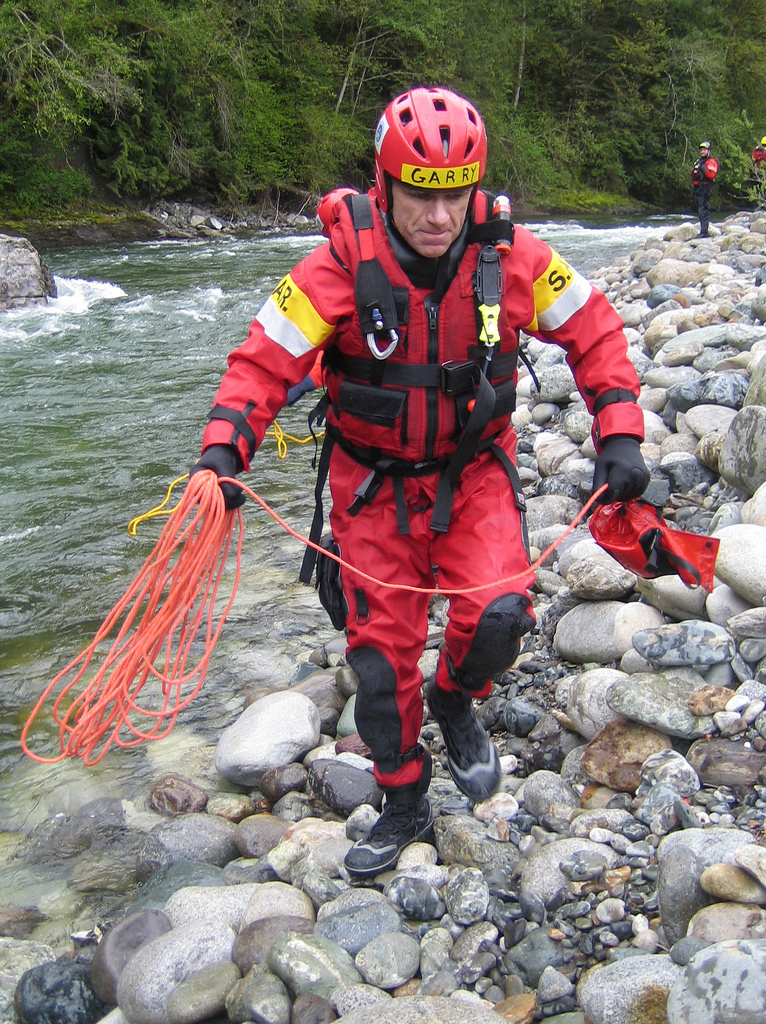

Rescuers must consider the amount of force not only on themselves but when retrieving victims as the surface area will be double or more.

Moving water creates tremendous forces that have the power to move cars, boulders, etc. Double velocity, quadruple the force lbf =Pounds of Force The force trapping a body depends on the amount of surface area exposed. The force exerted on an object in water is proportional to the surface area that is exposed to the force. (double the velocity = quadruple the force) The force can also knock you down and/or pin and trap you. It doesn’t take much velocity to create considerable force, which can overcome a victim or rescuer. Water Velocity x 2 = Water Force x 4 Test Question #9 When the water velocity doubles, the force of the water goes up by: A.Ē B.ē C.Ĕ D.ĕ All personnel must have the knowledge and a clear understanding of the power of water. Velocity: measured in feet per secondġ2 Force of moving water Rule of thumb. * Advise students to add the “Seconds” column to their notes. This will give you a quick reference to determine potential downstream travel. stick) in the water and record the time it takes to travel 100 feet I knot = 1.15 mph. Surface Velocity Time for float to travel 100 feet Throw a floating object (e.g. In a hydraulic or hole D.ěelow a low head dam Test question #5: Moving water is normally fastest at A. Water slows down and deepens… in front of dams and other obstructions. Water is faster… at the outside of bends and slower on the inside of bends. Water slows down… along banks and bottom. Helical Flowġ0 Water dynamics Water is fastest… at the surface and midstream. Helical flow is an area of high probability when searching for victims or other evidence materials. Helical flows can also be areas of safe refuge and provide a place to rest. Helical flows can be used by the rescuer to move upstream with little effort. The friction between the water and the banks will cause the water to spiral downstream between the banks and main current.ĩ Helical & Laminar flow Laminar Flow Helical Flow Heliform Helical flow: water traveling along the banks of the river. Things floating top river center are more likely to travel greater distances.Ĩ Helical flow A circular flow of water along the bank forcing water to midstream Phenomenon caused by friction between current and debris and material on the bank Test Question #4: Water flows down a river bed in two forms, laminar and _. Faster water should NOT have a wider path on the outside of a curve. Faster water is usually located near the center of the river just below the surface. Several layers of water will be moving together at different speeds. Relentless and predictable D.Ĝold and unpredictable Water has different personality traits that can change based on: speed water amount bed construction bank formation.ĥ Learn to respect the forces associated with moving water.īefore Big Thompson Flood Colorado, J32,800 cfs during the flood and ~400 cfs normally AfterĦ Laminar flow Layers of moving water which are slower on the bottom and along the banks (due to increased friction) Moving water is faster toward the center, midstream and on the outside of bendsħ Laminar flow Outside Bend Straight Section Fastest Fast Slow Slowest Water layers slow near the bottom and along banks due to friction Laminar flow refers to how the current travels downstream. Powerful and fast B.ĝeep and challenging C. Powerful Relentless Predictable Test Question #2: Name two characteristics of moving water: A. Drowning is the second leading cause of unintentional death for Children ages 17 and younger.ģ continued Costs: One drowning death can be associated with up to $3 million in total costs, according to the National Safety Council. WA State in 2005 104 unintentional drowning deaths.

Of these 21 took place in open water Most occurred in June and July- almost 30% of them in June. Presentation on theme: "Water Rescue Awareness"- Presentation transcript:Ģ Some quick statistics King County in 2006 31 people drowned


 0 kommentar(er)
0 kommentar(er)
